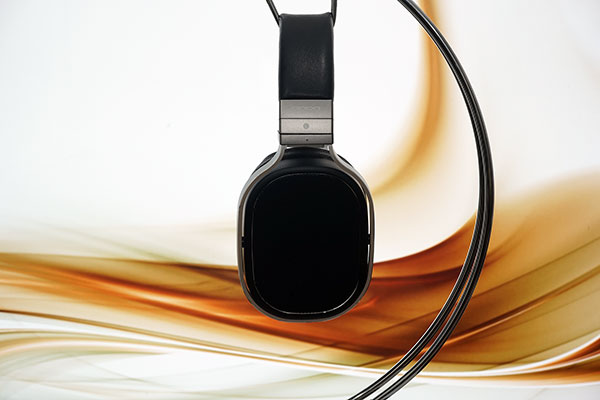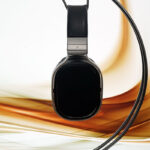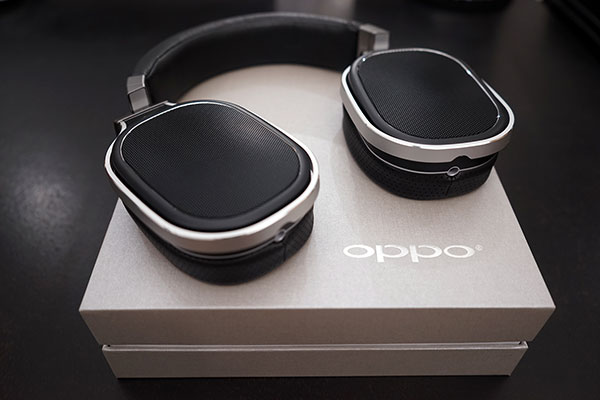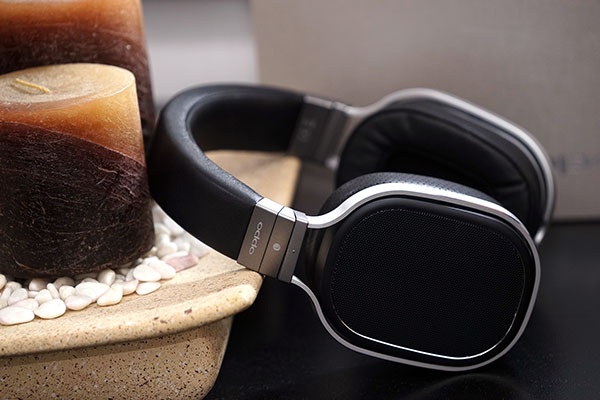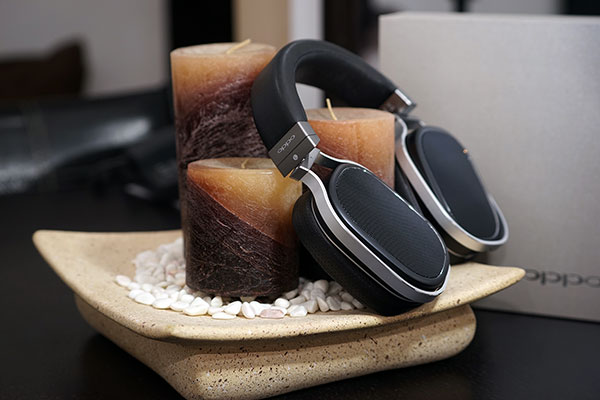Today, we review the Oppo PM-2, which is a new set of open-back planar magnetic headphones offering a more affordable alternative to the flagship PM-1. It is priced at $699 SRP.
Disclaimer: This is a sample sent in exchange for our honest opinion. Headfonics is an independent website with no affiliate links or status. Thank you to Oppo Digital for this opportunity.
Click here to read more on Oppo products that we have previously covered on Headfonics
Note, that this article follows our current scoring guidelines which you can read up on here.
Oppo has recently released their second planar headphone titled the PM-2 which looks a lot like the flagship PM-1.
Only this time the big unique selling point is the fact that you should get all of the benefits of the PM-1 but at a more tempting $699 price tag, especially to a lot of people struggling to hit the $1k mark for the PM-1.
There are some physical adjustments to fit into that alluring price tag but subtlety is the watchword here in terms of visuals and in the physical hand the PM-2 looks almost identical.
Oppo also used the gestation period of the PM-1 in the market to take back plenty of feedback from customers and reviewers alike before launching the PM-2.
Feedback
I’m usually a proponent of a warm, relaxing sound, but the original PM-1 didn’t mesh with me when I first heard it. A little more treble and air would have done wonders for alleviating its impact.
The problem seemed to be that OPPO put a felt disk in the middle of its pads, covering some of the drivers. This acted as a low pass filter, which shelved the treble a little too much for some tastes.
I am glad to see now that Oppo saw fit to roll out a new set of pads for the PM-1 free of charge to existing owners that goes a hell of a long way to addressing the original concerns.
The Rev 2 lambskin earpads have a new acoustic design (the removal of the felt disc ring and changing the perforation on the wall) and by all accounts, the PM-1 treble has benefited nicely from the new pads.
The feedback on the PM-1 has now allowed Oppo to roll out the PM-2 with a tonality (new pads and all) and a price that might be a very nice sweet spot indeed for those looking for a long-term investment.
Packaging & Accessories
The PM-1 is a lavishly packaged headphone, with a wooden presentation box, an expensive stand, and nice metal accents. But OPPO knows that not everybody wants to pay for unnecessary extras, so OPPO released the PM-2.
It, according to OPPO, is the same headphone minus the box, stand, leather padding, and metal accents, for $400 less.
Not only did OPPO release a dramatically cheaper version of their headphone, but they also listened to the feedback and designed new pads to alleviate the shelved treble woes people had with the PM-1. Now, the pads have no filter, which allows for the driver to shine, and shine it does.
While the PM-2 does not come with the fancy extras the PM-1 has, it still has the bare essentials: a 3M long 6.3mm cable, a 4ft 3.5mm cable (trust me, this makes sense; I’ll explain later), and a carrying case.
However, I do have some qualms about the carrying case being slightly too small. It fits the headphones, but I have to unplug the cable. It’s not a huge problem, but I am worried that constant unplugging of the cable will wear out the jacks, so I never use the case.
Before receiving the headphones, I was concerned that the pleather used would be flimsy, hearkening back to my days using cheap headphones.
Thankfully, while the pads are unabashedly pleather, the pleather is of good quality and probably won’t peel like on headphones like the Sony V6 and such. Of course, leather would be nicer, but if it means getting the PM-2 at almost half the price of the PM-1, I’m all for it.
Synergy
What I find most interesting about the PM-2 is that it is incredibly easy to drive. I hate using portable amps, so I figured the PM-2 would languish in my room being unused most of the time because I rarely spend time in my dorm. Thankfully, I couldn’t have been more wrong.
Out of my Galaxy Note 3, I was able to get more than loud enough at 75% volume, so the PM-2 has been one of my main portable headphones since getting it (which may be cringe-worthy to some, but I usually prefer open portable headphones to closed ones because Boston streets are pretty busy and I like knowing what’s around me). The 4-foot-long cable is perfect for my usage.
Sound Impressions
It’s clear that OPPO wanted to market the PM-2 as a luxury consumer headphone—it’s tilted toward the warmer end of the spectrum like many other consumer headphones. It doesn’t fail in one particular area, though it does have its quirks.
Treble
Treble is something that OPPO has had trouble with in their headphones. The PM-1, in my opinion, is far too dark for my tastes (and many others) pre-pad revision.
But OPPO listened to the complaints they got and released an alternate set of pads for the PM-1 that eschewed the felt between the ear and the driver meant to tone down treble. What’s more, they added it to the PM-1’s package and even gave it to the current owners of the PM-1.
The PM-2 comes with a similar pad made of pleather, but it seems that the driver is inherently tuned with a slightly laidback treble. Though I’d hesitate to call it dark; it has nothing on the Audeze, but it has less treble than the Hifiman HE500.
Some slight artifacts in the treble can get unpleasant (there’s a little more upper treble than I expected for what would otherwise be a warm-sounding headphone), but it’s only been prominent when I search for it, which I rarely do with the PM-2.
The thing about the PM-2’s sound is that it’s just so pleasant I can’t do analytical listening with it. It’s a nice change of pace from my analytical-sounding Audio Technica W5000. Though my “pleasant” can be another’s “boring,” so, take treble preferences into account before taking the plunge.
Switching from a Grado RS1e to the PM-2 led to a snoozefest, but in general, I’m a fan of the treble. Though I do wish I could kill the slightly wonky 5K-10K peak.
Midrange
The PM-2’s midrange is expectedly amiable. As a consumer-oriented headphone, the PM-2 is required to sound good with as many types of genres as possible, which necessitates a good midrange.
Thankfully, the PM-2’s best attribute to my ears is its midrange. It’s smooth, inviting, and surprisingly accurate. I hate the term “orthodynamic midrange” because planars don’t inherently have a good midrange (trust me, I’ve messed up enough planars’ midranges to know that).
However, the PM-2 embodies the stereotypical “orthodynamic midrange” which is usually described as warm yet accurate. Compared to the HE500 (with Focus Pads), it does sound a little congested though, which is indicative of their slight lack of air.
But despite the slight congestion, I do prefer the PM-2’s warmer sound to the HE500’s with brass and strings.
Bass
The PM-2’s bass is a bit hard to describe. The bass is tactile, but something is missing for me. They present a “thud” rather than a “thwoom.”
Their decay is faster than I’m used to, which can get slightly distracting when I’m waiting for the slow decay of a bass drum and instead, it decays faster than a snare drum.
I think OPPO solved most of the treble problem with their new pads, but I do feel like they overdamped the PM-2 slightly and in the process, hindered a fantastic driver.
I am overstating these problems, as they aren’t as bad as I’m making it sound. Objectively, the PM-2’s bass is better than 90% of the headphones I’ve used. But I’m nitpicking for the sake of being thorough.
Our Verdict
What OPPO has done in making a planar as efficient as some of my IEMs is nothing short of amazing, but OPPO seems to listen to people, so please, just fix these the treble and bass problems (and maybe a little more midrange and air) and you’d have a headphone that rivals the best Audeze and other warm-sound-favored companies have to offer.
But that extra stuff would likely result in a headphone that costs much more than the PM-2. $699 is a lot of money for a headphone, and I never like recommending people buy anything that costs more than $300, but I can’t think of a better “buy one, use forever” high-end headphones than the PM-2.
The magic with these headphones isn’t that will “wow” you at first listen, but that they allow one to ease into its sound and consistently sound at least decent no matter where they are used, be it a cell phone or a megabuck amplifier. That’s more than I can say about most headphones.
Oppo PM-2 Technical Specifications
Headphone Specifications
- Acoustic Principle Open back
- Ear Coupling Circumaural
- Nominal Impedance 32 Ohm
- Sensitivity 102 dB in 1 mW
- Clamping Pressure 5 N
- Cables 3 m detachable OFC cable (6.35 mm)
- 1 m detachable OFC cable (3.5 mm)
- Cable Connectors Output: 2.5 mm mono mini jacks
- Input: 6.35 mm stereo jack, 3.5 mm stereo jack
- Weight 385 g (without cable)
- Included Accessories Carrying Case
- 6.35 mm and 3.5 mm cables
- User Manual
Driver Specifications
- Driver Type Planar Magnetic
- Driver Size (Oval) 85 x 69 mm
- Magnet System Symmetric push-pull neodymium
- Frequency Response
- In Free-Field 10 – 50,000 Hz
- Long-Term
- Max Input Power 500 mW according to IEC 60268-7
- Pulse Max Input Power 2 W

